Particle Accelerator Megapost
Wednesday, 17th May 2006 by
The Stanford Linear Accelerator Center (SLAC) in California is funded by the US Department of Energy but operated by Stanford University. The SLAC has a 3km long underground linear accelerator which is the longest linear accelerator in the world and claimed to be the world's straightest object. The building above ground on top of the accelerator, the "klystron gallery", is the longest building in the United States.
The Advanced Photon Source (APS) at Argonne National Laboratory in Illinois is another US based lab with a linear accelerator but this one uses a Synchrotron. A synchrotron is a circular accelerator that uses a magnetic field to turn the particles and an electric field to accelerate them. By careful tuning of these two fields particles can be accelerated to 99.999999% of the speed of light. Once particles get up to these speeds the experments can begin. The super accelerated particles are shoved through things, bent with mirrors and have other particles injected into the steam to see what happens.
These two circles that look like a sideways eight are the Tevatron at the Fermi National Accelerator Laboratory in Illinois and make up the world's highest-energy particle accelerator. Four miles in circumference, the Tevatron is housed in a tunnel about 30 feet below the big ring you see in the aerial view. The particles complete the four-mile course nearly 50 thousand times a second. Damn, that is fast.
The other big player in particle accelerators in CERN, the European Organization for Nuclear Research, the world's largest physics laboratory. CERN is located on the border between France and Switzerland and is otherwise known as the birth place of that thing called the World Wide Web. CERN have numerous particle accelerators but the biggest is the Large Hadron Collider. The LHC is currently under construction in tunnels that used to house the Large Electron-Positron Collider which ran from 1989 to 2000. This tunnel is 27km in length and 100 metres underground! It's like something out of Half-Life! Unfortunately there isn't very much to see from the air, the LHC is located somewhere in the area between Geneava airport and the Jura mountains to the North. I've been staring at the imagery for a while and I can't make out any trace of it on the surface. Can you?
I'm sure there are many more accelerators out there to see but my head was starting to hurt from reading about particle physics. Feel free to post your particle physics related finds as comments on this post!
Thanks: Scott Lawson, dan, Matt, Jason, Rahul Karnik, David, joe, Foo Bar, Matt, Tom, Ilia Baldine, Douglas Boberg, Fred, Dave D, Brian Potter, Steve Abrahamson, Thomas Wade, Laurence Dorazio, Daryl Achilles, Tony Scislaw, Marc Armstrong, Tyler Stevenson, Joe, Luistxo Fernandez, Janx Spirit, David Drexler, David Drexler, Matt W., Matthew, Rodrigo, Joe, Jochen, Matthew Sz., Williamckley, Drew DeMott, Michael Lehet, Hubert Grzywacz, Bjørnven, Thomas, J Foote, Brad Lauster, Dalvenjah FoxFire, Robert Bogdon, cjw, Parker, Jim Duncan, Steve Bryson, Jeffrey Deane, Ryan Means, Benjamin, Jason Harris, David Drexler, Bobllingson, Lennie Stovel, punk floyd, Jason, SFuller and Sounil Yu.
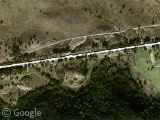
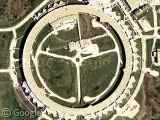
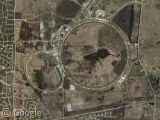
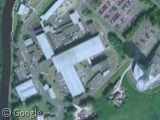
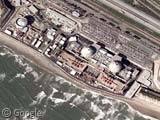
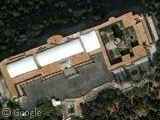
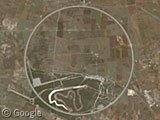
you can see where CERN is http://www.balu.sk/fotky/cern/cern_full_small.jpg or http://www.balu.sk/fotky/cern/cern_full.jpg
Here’s the CERN on the center of this sat image. And here’s a rought map. You can figure out a relatively small circular accelerator on the center of the main CERN site. The LHC accelerator is situated underground in a very large circle, basically invisible from space. The pictures posted by the previous commenter gives you a hint to where the circle lies.
Here’s an aerial shot of CERN with the location of the LHC tunnel marked: http://jonathan.rawle.org/scrapbook/cern/index.php
Well, you asked…
Jefferson Laboratory in Newport News, Virginia. Not a big accelerator by any means — equivalently, not very high energy — but high intensity. Their web site: http://www.jlab.org/ .
Near Brookhaven, New York is the Relativistic Heavy Ion Collider, also not a huge machine but this one accelerates heavy ions. If you want to smash one gold nucleus into another, this is the place to do it. Web site: http://www.bnl.gov/rhic/ .
Funny thing about RHIC, it was built on the site intended for ISABELLE. That was a particle accelerator project that was cancelled in 1983 after $200 million had been spent on it. Part of the reason for cancellation was to concentrate on building the Superconduction Super Collider (SSC)… a project that was cancelled in 1993 after nearly $2 billion had been spent on it. The SSC was being built near Waxahachie, Texas. If there are remnants of that project visible I haven’t found them.
On the other side of the world: the “Spring8” particle accelorator in “Harima Science Garden City, Hyogo-ken, Japan. It’s not a great resolution image unfortunately. This is their official website with better aerial photos, etc. Not sure how this one ranks in comparison to the others above. I really enjoy this site. Keep it up! Ronan
As I look out of the 12th story window of Wilson Hall at Fermilab, yeah, that thing’s big!
Spring8 is a synchrotron radiation source, usually considered a distinct class of machine from a particle accelerator (even if the x-rays are generated by accelerating electrons).
I have submitted the UK’s Daresbury and Diamond synchrotrons to the site for a future post! The big one is the European Synchrotron Radiation Facility in Grenoble, but as with Spring8 it’s not hi-res yet: View Placemark
If this: http://www.balu.sk/fotky/cern/cern_full.jpg is correct, then I went ahead and placemarked all the circled buildings in google earth. Here is the KZM file:
http://24.3.227.184/files/CERN.kmz (Right-click, save as)
Finally! A submission I made many months ago (SLAC) gets used, and you misspell my name! Well, you also missed your chance at cosmic irony (or some statement on humanity’s eternal quest for knowledge?) by not putting this post about the modern huge circular structures built to explore the fringes of science, next to the prehistoric Avebury ring structure built to…what?
Interesting choice of location for the SLAC. If you zoom out a little bit, you can see that the accelerator is only about a mile to the east of the San Andreas Fault (the fault is the linear feature running under the reservoir in the northwest towards the southeast): View Placemark
I wonder how much an earthquake would damage its reputation of world’s stratest object.
It also goes under a very busy freeway (US 280), so they must not be too concerned about vibration.
Wasn’t there a MASSIVE one planned and started in Texas about 10 or so years ago? But it only got about 25% dug, and then the GOP Congress killed? Or am I crazy?
12,
See #4.
haydesigner, You are probably thinking of the SSC (Superconducting Supercollider) which was mentioned in the 4th post. It was to be a very large accelerator, the ring of the SSC being over 80 km in circumference, and collide two proton beams (or was it a proton-antiproton collider?) of 20 TeV each. The LHC at CERN will be the highest energy particle accelerator in the world when it is finished and it is only 27 km in circumference, and will collide two proton beams, each of 7 TeV. So, comparing the two the SSC was indeed massive.
Your paragraph about the APS and how synchrotrons are used is inaccurate.
A better description:
Particles (electrons) traveling around the storage ring in ultra high vacuum and at the speed of light, go through magnetic fields which make them emit laser-like beams of x-rays which are sent onto mirrors and stuff to do experiments in which we study the interaction of the x-rays with matter to get information on atomic and molecular systems.
It is the synchrotron radiation (mainly xrays) that is used in experiments, not the particles used to produce it.
I heard from a scientist at Fermilab in March that CERN will be taking over major, large-scale particle acceleration projects. Is this still holding true? If so, will Fermilab cut some jobs at its establishment if such projects are under CERN’s control?
CERN has a superb interactive map showing the different points where HLC is located : http://building.web.cern.ch/building/ & http://ts-dep.web.cern.ch/ts-dep/groups/fm/ts-fm-isp/fr/patrim5_v8.jpg